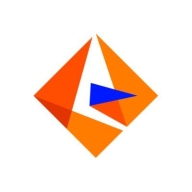

Informatica Intelligent Data Management Cloud (IDMC) and SAP Data Hub compete in data management and integration. IDMC seems to have the upper hand with its cloud-native capabilities and faster ROI, whereas SAP Data Hub is preferred for its alignment with SAP ecosystems and robust data orchestration.
Features: IDMC offers advanced data integration, AI-powered data quality, and flexible deployment options with a wide range of connectors and integration capabilities. SAP Data Hub provides efficient data orchestration, strong lineage, and governance features, making it suitable for organizations with significant SAP investments.
Ease of Deployment and Customer Service: Informatica provides a cloud-first approach with substantial customer support and resources for smooth deployment, designed for diverse environments. SAP Data Hub requires significant initial setup, benefiting those with existing SAP infrastructure but potentially needing longer integration times.
Pricing and ROI: Informatica IDMC offers a subscription-based model, appealing for predictable costs and scalable pricing as data volumes increase. SAP Data Hub might involve higher upfront costs but provides significant value for specific SAP use cases. IDMC tends to offer faster ROI with lower initial setup and cloud-native features, while SAP Data Hub's ROI is optimized for SAP-centric landscapes.
| Product | Market Share (%) |
|---|---|
| Informatica Intelligent Data Management Cloud (IDMC) | 5.9% |
| SAP Data Hub | 1.0% |
| Other | 93.1% |

| Company Size | Count |
|---|---|
| Small Business | 42 |
| Midsize Enterprise | 24 |
| Large Enterprise | 134 |
Informatica Intelligent Data Management Cloud (IDMC) integrates data quality, governance, and integration with flexible architecture. It supports multiple domains and a data models repository, delivering AI-enhanced data management across cloud-native platforms.
IDMC provides seamless integration and governance capabilities that support diverse data environments. Its comprehensive suite includes customizable workflows, data profiling, and metadata management. AI features, a data marketplace, and performance scalability enhance data management. While its interface poses challenges, its robust matching and cloud-native integration facilities are essential for complex data ecosystems. Users employ IDMC for connecting systems, ensuring data quality, and supporting data compliance but seek better pre-built rules, services, and improved connectivity, especially with platforms like Salesforce. Licensing, cost, and added AI functionalities are areas for potential refinement.
What are the key features of IDMC?IDMC is implemented across industries for data integration, metadata management, and governance. Organizations use it to connect systems, migrate data to cloud environments, and maintain data quality. They manage master data and automate business processes, facilitating data lineage and ensuring compliance with privacy regulations.
The SAP® Data Hub solution enables sophisticated data operations management. It gives you the capability and flexibility to connect enterprise data and Big Data and gain a deep understanding of data and information processes across sources and systems throughout the distributed landscape. The unified solution provides visibility and control into data opportunities, integrating cloud and on-premise information and driving data agility and business value. Distributed processing power enables greater speed and efficiency.
We monitor all Data Governance reviews to prevent fraudulent reviews and keep review quality high. We do not post reviews by company employees or direct competitors. We validate each review for authenticity via cross-reference with LinkedIn, and personal follow-up with the reviewer when necessary.